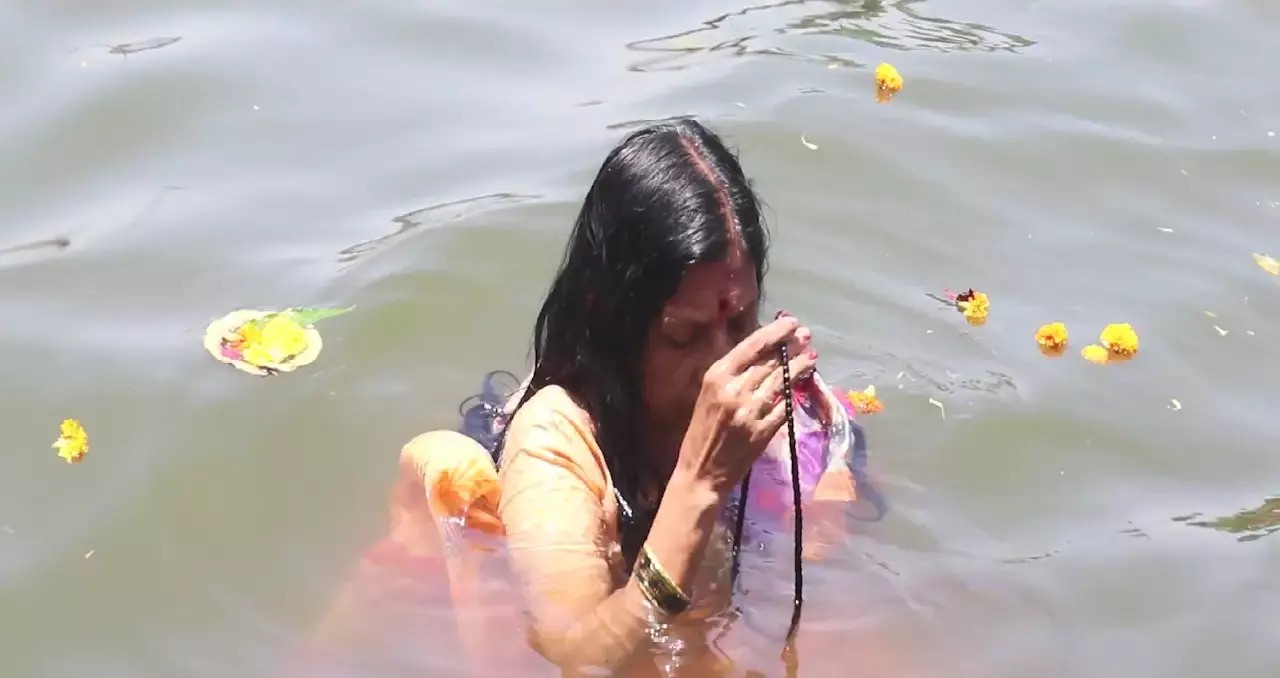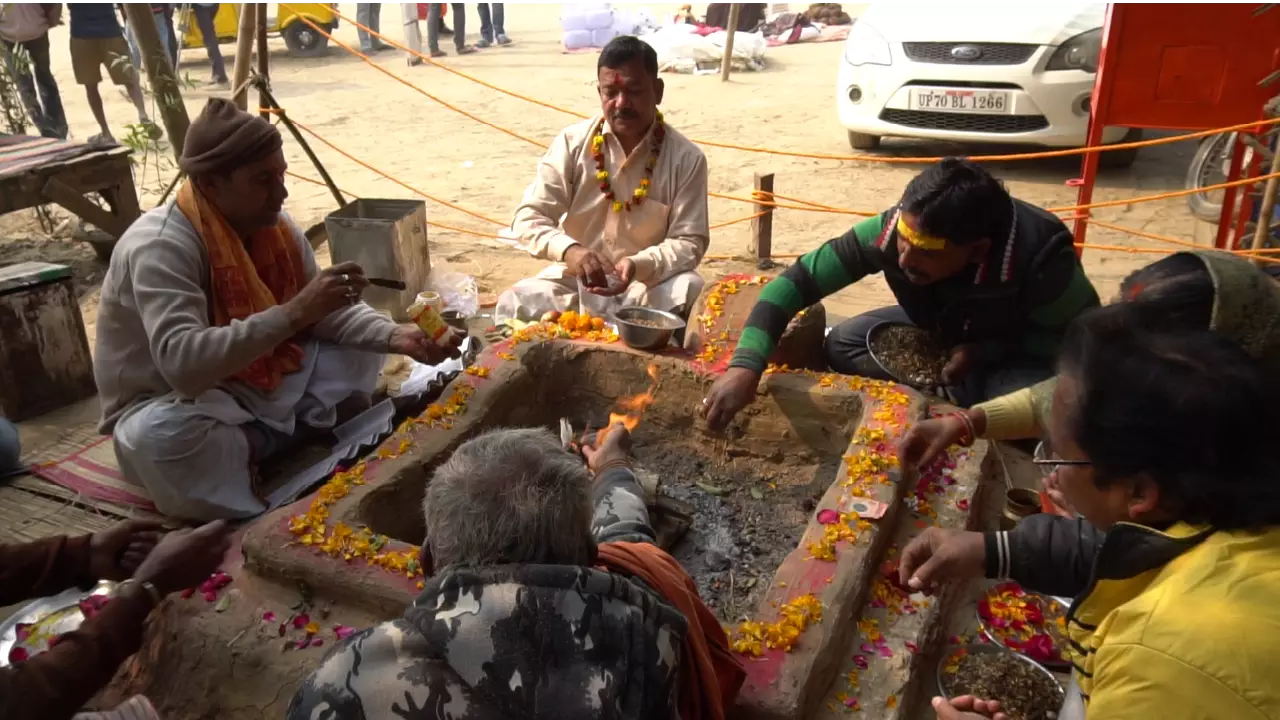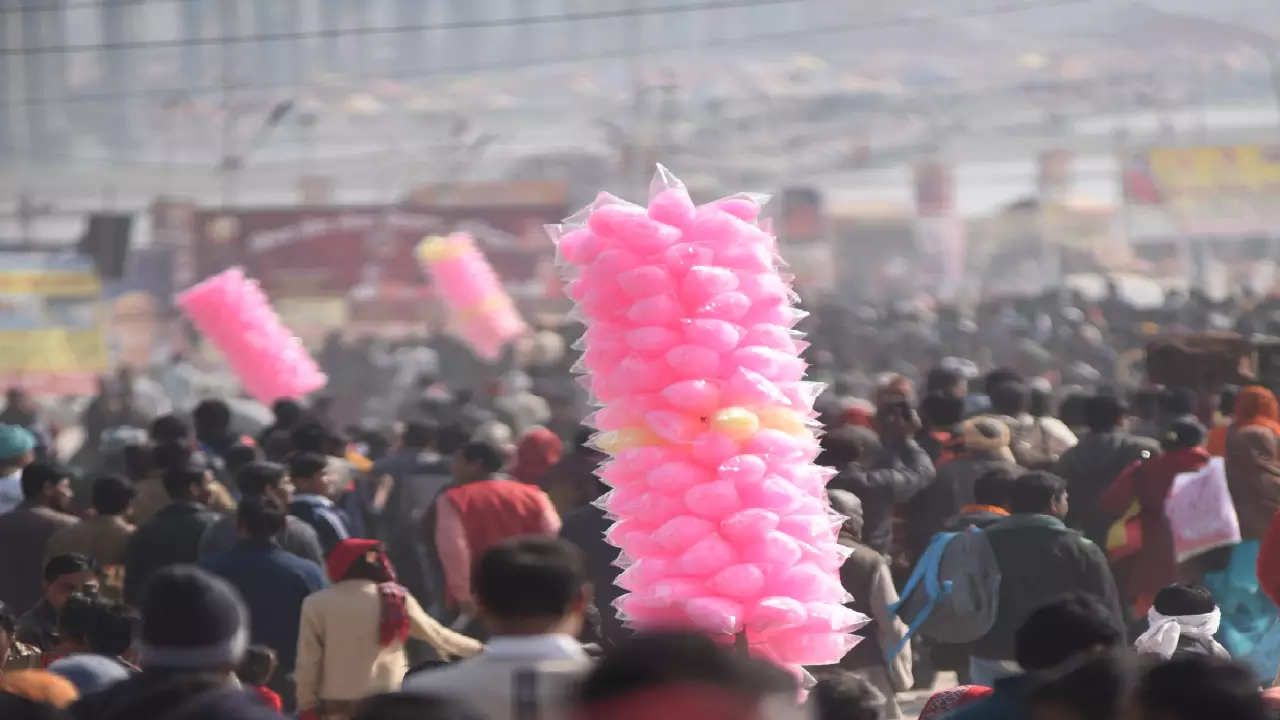From Morning Dip to Evening Aarti: Experiencing a Day of Devotion at the Kumbh Mela
Each sunrise and sunset at the Kumbh Mela marks another timeless cycle of faith, reminding every pilgrim of their soul’s ancient connection with the cosmos. As one walks through the misty dawns along the sacred riverbanks, the air hums with chants, conch shells, and the fragrance of faith. The day of a pilgrim here unfolds as a sacred rhythm—an immersive experience woven through Daily rituals at Kumbh Mela, where cosmic alignments, Vedic traditions, and devotion unite into one profound expression of Sanatana Dharma.
Dawn: The Sacred Dip and Purification
As the first light breaks over the Triveni Sangam, the confluence of the Ganga, Yamuna, and the hidden Saraswati, the pilgrim begins the day long before sunrise. During Brahma Muhurta, the pre-dawn hour considered most auspicious for spiritual practice, the subtle atmosphere invites meditation and purification.
The Holy Snan (Bath)
At this divine hour, devotees enter the chill waters to perform their first sacred act — the Snan (ritual bath). According to the Padma Purana and Skanda Purana, the holy dip cleanses lifetimes of karma and offers peace to one’s ancestors. It is said that each drop of water at the Sangam carries vibrations of the celestial nectar, the Amrita, enhancing one’s spiritual merit thousandfold.
As the cold ripples touch the skin, pilgrims chant quietly, surrendering body and soul to the divine current. The Daily rituals at Kumbh Mela begin here, with each moment symbolizing the washing away of illusion and the awakening of eternal truth.
Mundan and Shraddha
Many pilgrims next perform Mundan (tonsure), letting their hair fall into the sacred waters as a gesture of surrender and freedom from ego. The scriptures promise liberation from repeated births for each strand offered. Immediately after, rituals like Tarpana (water offerings) and Pindadana (offering rice balls) are performed to honor ancestors, ensuring their peace in the next realm. Through these rites, one acknowledges the continuous link between the living and the departed — an echo of gratitude that resonates through eternity.

Morning: The Procession of Akharas and the Radiance of Sadhus
By mid-morning, the ghats of the Kumbh Mela come alive with energy. The rhythmic drumbeats, the scent of sandalwood, and the chanting of Har Har Mahadev signal the arrival of the Akharas — the sacred monastic orders that have safeguarded the Vedic tradition for centuries.
The Royal Shahi Snan
The most stirring sight for any pilgrim is the Shahi Snan, the Royal Bathing Day procession. The Naga Sadhus, unclothed and covered in ash, lead with fierce devotion and serene dignity. Their presence embodies detachment from worldly illusion and mastery over desire. Carrying tridents, flags, and symbols of their sects, they march fearlessly toward the river in divine ecstasy.
As they plunge into the waters, the confluence transforms into a celestial theatre of liberation — the living expression of renunciation meeting devotion. Watching this sacred moment, one feels the pulse of ancient India beating alive within every drumbeat and mantra. For many visitors, witnessing this spectacle is among the most memorable Daily rituals at Kumbh Mela.
Darshan of Saints and Spiritual Leaders
Pilgrims line the pathways to receive Darshan — the sacred sight — of revered saints and gurus. Just meeting their gaze or receiving a blessing feels like absorbing centuries of wisdom. Among them, some ascetics perform astonishing austerities: standing on one leg for years, meditating in silence, or remaining seated on pointed nails. Their lives are embodiments of the tapas (austerity) prescribed by the Vedas.
Midday: Discourses, Divine Knowledge, and Community Service
Once the grand bath concludes, the focus shifts from external rituals to the intellectual and spiritual dimensions of the Mela. The camps and temporary halls, known as pandalas, host profound discourses by Acharyas, Gurus, and Sadhus.
Listening to the Teachings
Under the shade of colorful tents, pilgrims gather to hear interpretations of sacred texts such as the Bhagavad Gita, Upanishads, and Ramcharitmanas. The topics often center around self-realization, devotion, and the four Purusharthas — Dharma (righteousness), Artha (prosperity), Kama (desire), and Moksha (liberation). Each discourse fills the air with wisdom and deep surrender, reminding devotees that the true Kumbh lies within—from confusion to clarity, from self to soul.

Langar: The Spirit of Seva (Service)
Across the grounds, free communal kitchens (Langars) serve thousands of pilgrims daily. The aroma of simple vegetarian meals spreads warmth and equality; no one here is poor or superior — all sit together as children of the same Divinity. This spirit of Seva, embodied in the Daily rituals at Kumbh Mela, reflects the philosophical core of Sanatana Dharma: to serve humanity is to serve God.
Kalpavasis, the devotees who reside at the Kumbh for its entire duration, observe strict discipline — practicing fasting, simplicity, and meditation. They consume one meal a day, symbolizing the renunciation of indulgence and reinforcing spiritual endurance.
Dusk: From the Glow of Lamps to the Stillness of Silence
As the sun dips below the horizon, golden rays reflect off the river’s waves. The Kumbh city glows with thousands of earthen lamps, each carrying a prayer into the infinite sky.
Evening Aarti at the Ghats
The Evening Aarti is one of the most enchanting Daily rituals at Kumbh Mela. Standing by the flowing river, I’ve often watched priests waving circles of fire while conch shells echo through the twilight. The synchronized motion of lamps, chants of Om Namo Ganga Devi and collective surrender of pilgrims create an unearthly beauty that transcends time. This moment encapsulates devotion — light conquering darkness, purity dissolving ego.
Night Vigil: Kirtan and Meditation
As night deepens, camps across the Mela reverberate with Kirtan (devotional singing). The faithful gather to sing, dance, and chant the Lord’s name — often staying awake for hours in a practice known as Jagaran. Some recite the Puranas, while others perform silent meditation beside the river, immersed in inner reflection.
The temporary city of the Kumbh, bustling by day, transforms at night into a sea of peace. Flickering oil lamps and hymns create a surreal harmony that connects everyone — saint and traveler alike — with the eternal.
The Inner Meaning of a Day’s Journey
A full day at the Kumbh Mela is not just a series of physical acts — it is a pilgrimage inward. From the purifying dip at dawn to the tranquil meditation under starlight, every ritual represents a step toward self-realization.
These Daily rituals at Kumbh Mela mirror the life journey itself: birth (morning), learning and action (day), reflection (evening), and dissolution into peace (night). Within this cycle of light and devotion lies the eternal message of the Vedas — that the divine dwells not elsewhere, but within the heart of every seeker.
Conclusion
To experience even one complete day at the Kumbh Mela is to witness the harmonious fusion of heaven and earth. Each moment pulsates with devotion, humility, and the awareness that we are participants in a cosmic celebration that has flowed unbroken for thousands of years.
Through the Daily rituals at Kumbh Mela, the pilgrim learns that true spirituality lies not in grand gestures, but in sincere surrender — in every prayer uttered, every ritual performed, and every breath offered back to the Divine River of Life.

